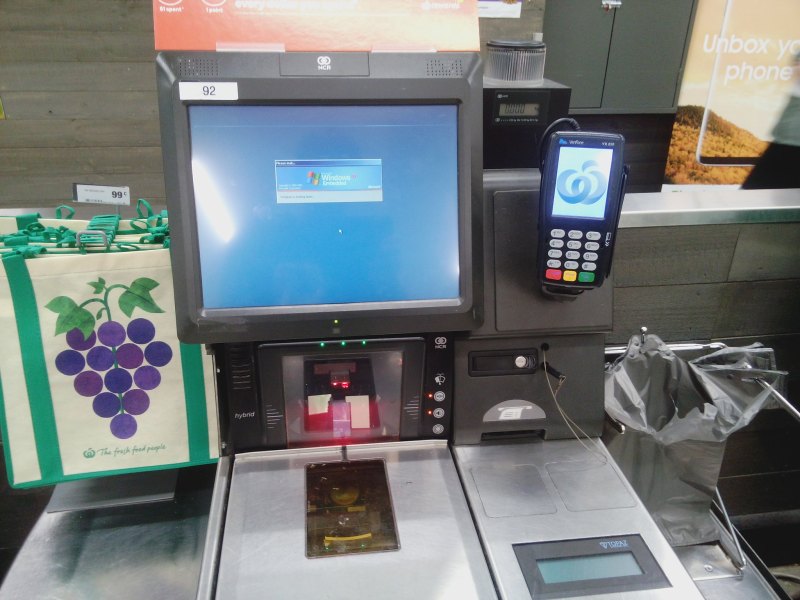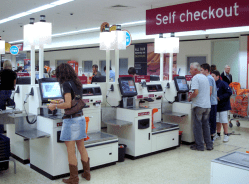
Most people who read Hackaday have positive feelings about automation. (Notice we said most.) How many times have you been behind someone in a grocery store line waiting for them to find a coupon, or a cashier who can’t make change without reading the screen and thought: “There has to be a better way.” The last few years have seen that better way, but now, companies are deciding the grass isn’t greener after all. The BBC reports that self-checkouts have been a “spectacular failure.” That led us to wonder why that should be true.
As a concept, everyone loves it. Stores can hire fewer cashiers. Customers, generally, like having every line open and having a speedy exit from the store. The problem is, it hasn’t really panned out that way. Self-checkout stations frequently need maintenance, often because it can’t figure out that you put something in the bag. Even when they work flawlessly, a customer might have an issue or not understand what to do. Maybe you’ve scanned something twice and need one of them backed off. Then, there are the age-restricted products that require verification. So now you have to hire a crew of not-cashiers to work at the automated not-register. Sure, you can have one person cover many registers, but when one machine is out of change, another won’t print a receipt, and two people are waiting for you to verify their beer purchase, you are back to waiting. Next thing you know, there’s a line.

These systems aren’t cheap, which surprised us. A four-kiosk system might run upwards of $100,000. But that cost would be quickly absorbed if you could fire your cashiers and get customers to do their work for free. Faster? Some studies suggest that’s perception. Because you have an active role in the checkout process, it seems faster, even though it is often actually slower. Waiting in line or waiting for a non-cashier to approve things makes it even worse.
But Why?
So why is this a problem? Is it that the technology isn’t ready yet? Is it just poor implementations? Or do we need new strategies? After all, we’ve seen tech like videotape make false starts before catching on. We’ve also seen plenty of new products killed by poor implementation. New approaches are a bit more difficult, though.
One problem may be the whole idea of a checkout station to start with. Sometimes tech changes require you to approach problems differently. For example, Sam’s Club already lets you scan items as you put them in your cart using your smartphone. You pay on your phone; a human spot-checks you on exit. However, they are rolling out an “arch” you pass through, and cameras take pictures from all sides, verifying bar codes and items they can identify. Presumably, it will reject you if you have something extra and pass you if it can validate a certain percentage of your order. Amazon has famously fielded stores where you identify when you enter, load up, and leave. The store figures out what you bought and automatically deducts the cost.
ATMs have all but eradicated bank lobbies and tellers for all but the most complex transactions. But think about this: ATMs rarely fail. Sure, sometimes they are out of service or know they don’t have enough money or network connections and tell you that. But when was the last time an ATM gave you more or less money than you wanted without telling you? Imagine if you had to repeatedly scan your ATM card before it took and then, sometimes, it would not know if you had enough money, so someone had to check on it or you might have to go inside to get the 8th $20 bill of your $160 withdrawal because it only gave you seven bills. You probably wouldn’t use ATMs.
What do you think? Can self-checkout be saved? How? Will it sink beneath the waves only to resurface in 20 years with robo-AI cashiers? Let us know in the comments.
Of course, if you make your living as a cashier, this might not be at all amusing. While we think retailers are missing out by not “gamifying” self checkout — you win 10% off! — we don’t think competing for speed is the right game.
Banner Photo: “Self-checkout not-so-high-tech” by [Anj Simmons]. (WinXP!)
Ask Hackaday: Why Are Self-Checkouts Failing?
Source: Manila Flash Report
0 Comments